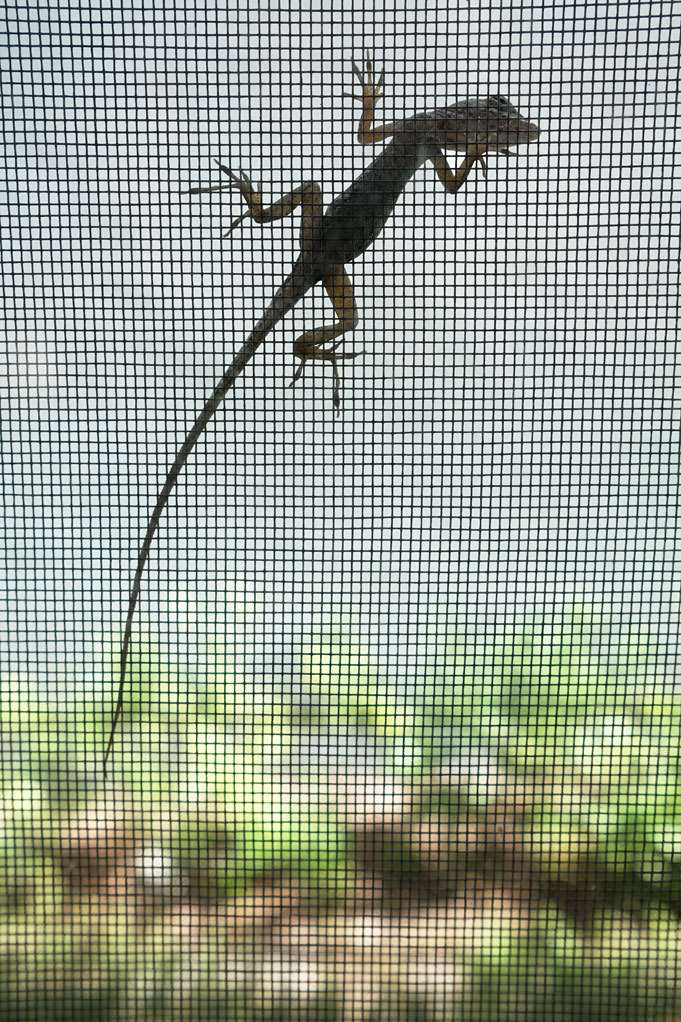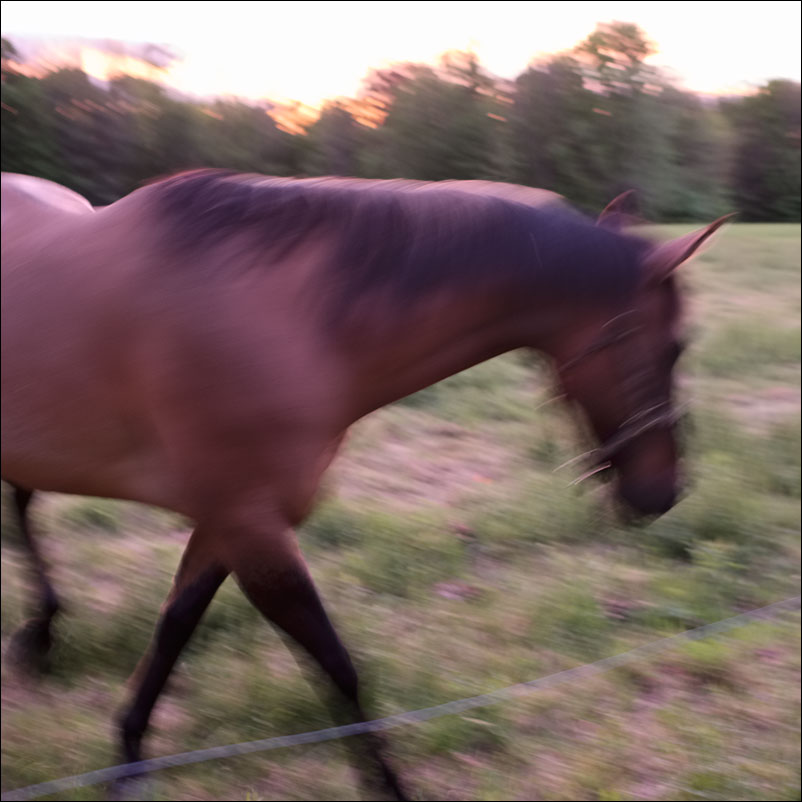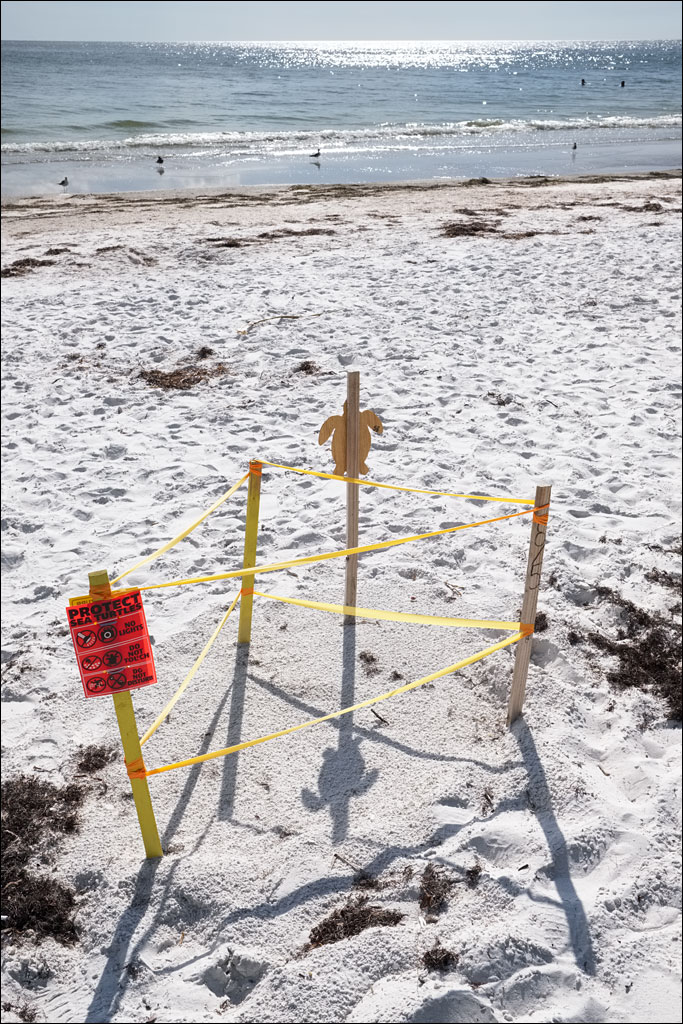 Sea turtles have been nesting in Florida for a very long time, well before humans used these beaches. Nesting sites are marked out to reduce the impacts on these endangered animals from those seeking out the sun and water. Unfortunately, our impact is not limited to these sandy shores. Fishing and pollution are taking a huge toll. Click on the image for a larger view.
Sea turtles have been nesting in Florida for a very long time, well before humans used these beaches. Nesting sites are marked out to reduce the impacts on these endangered animals from those seeking out the sun and water. Unfortunately, our impact is not limited to these sandy shores. Fishing and pollution are taking a huge toll. Click on the image for a larger view.
Tag Archives: Wildlife
Flycatcher
Wasp
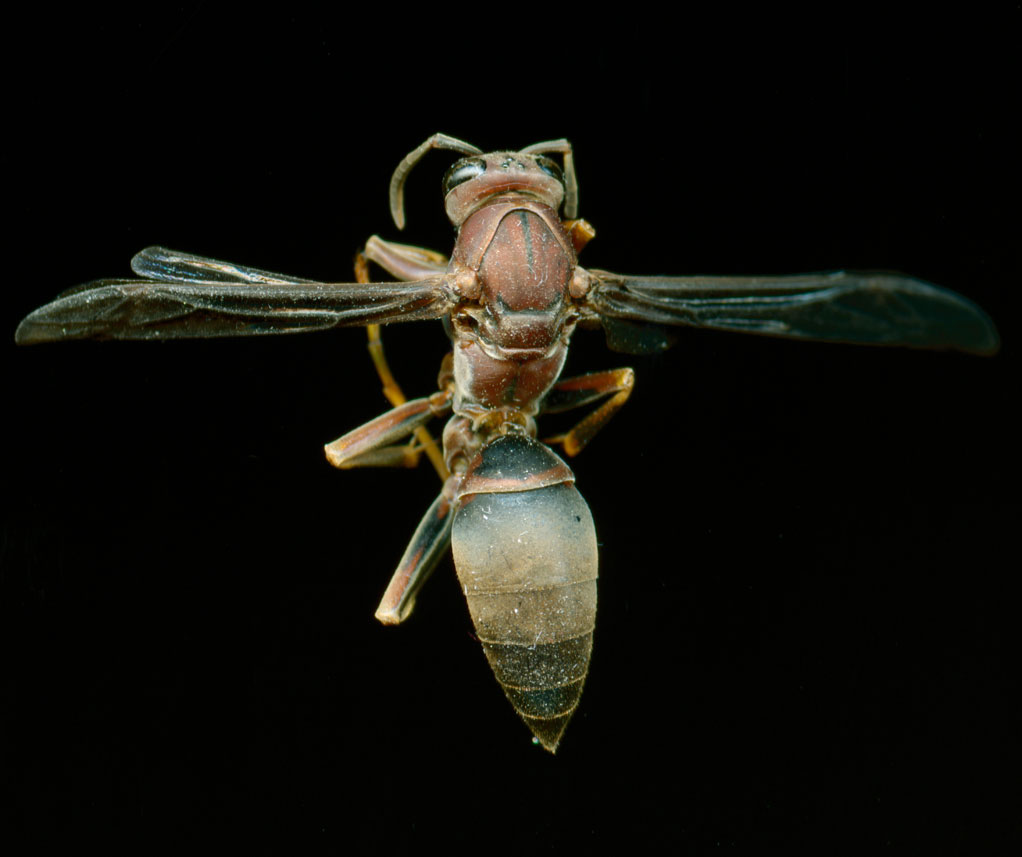 I am not sure the type of wasp, but we found the remains just on the inside of our window. It is missing two of its wings, but apart from that, it is it good shape. At first appearance, it seem rather plain, but under closer inspection, the markings and structure are beautiful. As with most insects, this wasp also has three primitive eyes between its larger primary compound eyes. Click on the image for a larger view.
I am not sure the type of wasp, but we found the remains just on the inside of our window. It is missing two of its wings, but apart from that, it is it good shape. At first appearance, it seem rather plain, but under closer inspection, the markings and structure are beautiful. As with most insects, this wasp also has three primitive eyes between its larger primary compound eyes. Click on the image for a larger view.
American Alligator
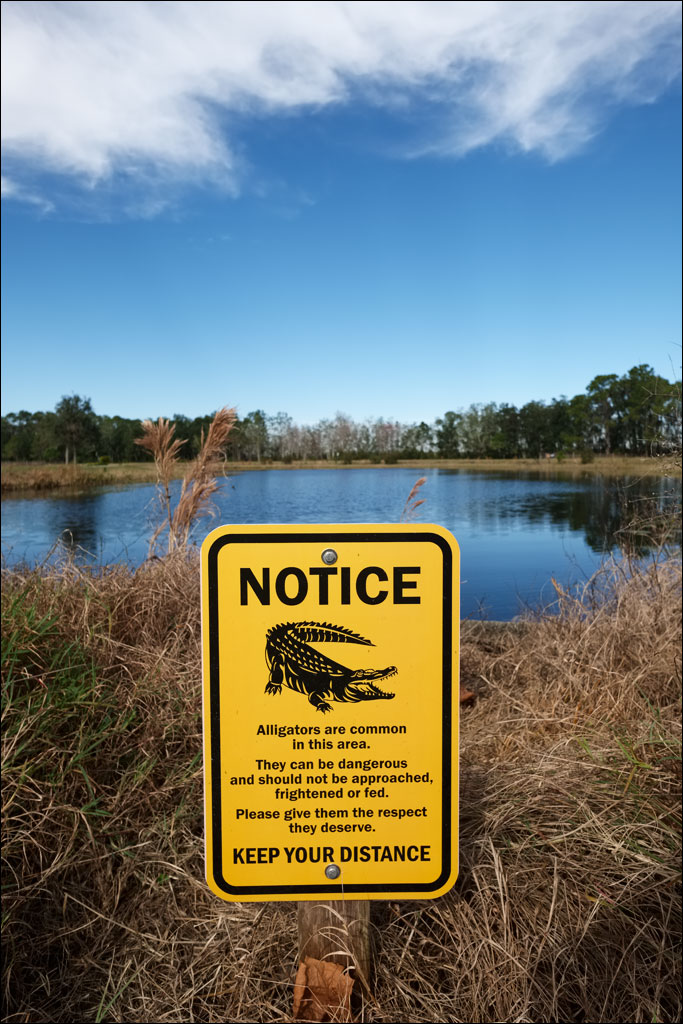 One facet of life in Florida is sharing the land with the American alligator. This sign is in the park in our residential subdivision. About 100 ft from this sign was an alligator laying in the reeds along the bank of the pond—wise words of caution. Continue reading
One facet of life in Florida is sharing the land with the American alligator. This sign is in the park in our residential subdivision. About 100 ft from this sign was an alligator laying in the reeds along the bank of the pond—wise words of caution. Continue reading
Northern Mockingbird
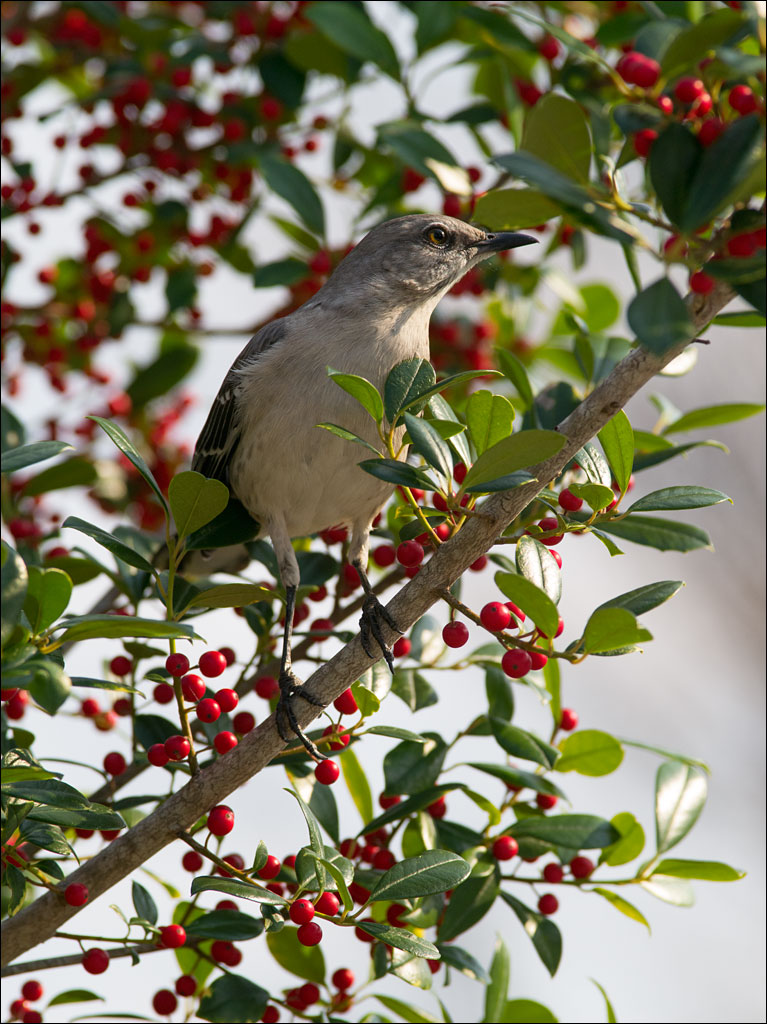 We were visited by a Northern Mockingbird this afternoon. While the plumage of this bird is subdued, its song is complex and beautiful, giving it its latin name, Mimus polyglottos, the many-tongued mimic. It serenaded us for several minutes while feeding. Continue reading
We were visited by a Northern Mockingbird this afternoon. While the plumage of this bird is subdued, its song is complex and beautiful, giving it its latin name, Mimus polyglottos, the many-tongued mimic. It serenaded us for several minutes while feeding. Continue reading
An Armadillo Tail
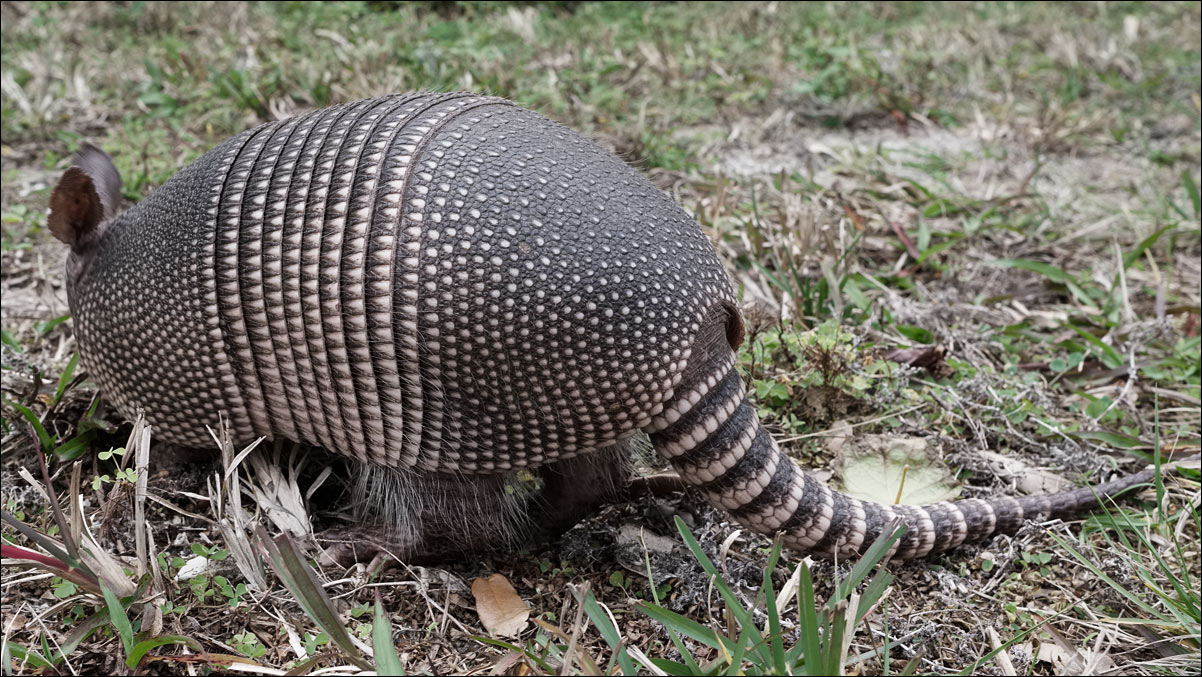 Nine-banded armadillos, Dasypus novemcinctus, get their name from the joints in their leathery skin. Originally from the southwest of North America, armadillos migrated to Florida where they are now considered naturalized. While their eyesight is limited, they have a keen sense of smell and use their snout to root out worms and insects. They live in complex borrows. Females lay a single egg that divides to produce four identical offspring all of the same sex, either four males or four females. To cross small bodies of water, they submerge themselves and walk along the bottom. For wide bodies, they inflate their stomachs for buoyancy and swim across. They will jump in the air if startled, which leads to many traffic fatalities. Click on the image for a larger view.
Nine-banded armadillos, Dasypus novemcinctus, get their name from the joints in their leathery skin. Originally from the southwest of North America, armadillos migrated to Florida where they are now considered naturalized. While their eyesight is limited, they have a keen sense of smell and use their snout to root out worms and insects. They live in complex borrows. Females lay a single egg that divides to produce four identical offspring all of the same sex, either four males or four females. To cross small bodies of water, they submerge themselves and walk along the bottom. For wide bodies, they inflate their stomachs for buoyancy and swim across. They will jump in the air if startled, which leads to many traffic fatalities. Click on the image for a larger view.
Florida’s Sandhill Cranes
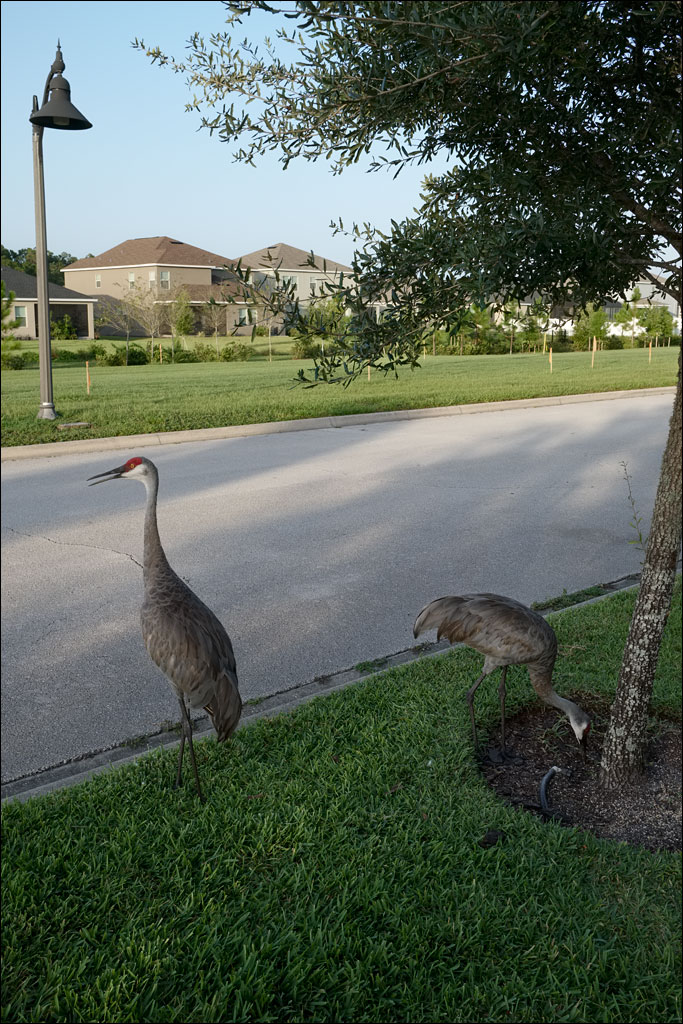 For most of their species, Sandhill Cranes are migratory, heading north in the summer and returning in the winter. Central Florida has a population of non-migratory cranes. These large birds mate for life and can live for over thirty years. They can also become used to humans, although their confidence should not be confused with being harmless or domesticated: they are a wild animal and will protect themselves if felt threatened. Click on the image for a larger view.
For most of their species, Sandhill Cranes are migratory, heading north in the summer and returning in the winter. Central Florida has a population of non-migratory cranes. These large birds mate for life and can live for over thirty years. They can also become used to humans, although their confidence should not be confused with being harmless or domesticated: they are a wild animal and will protect themselves if felt threatened. Click on the image for a larger view.
New Neighbors
Tracks
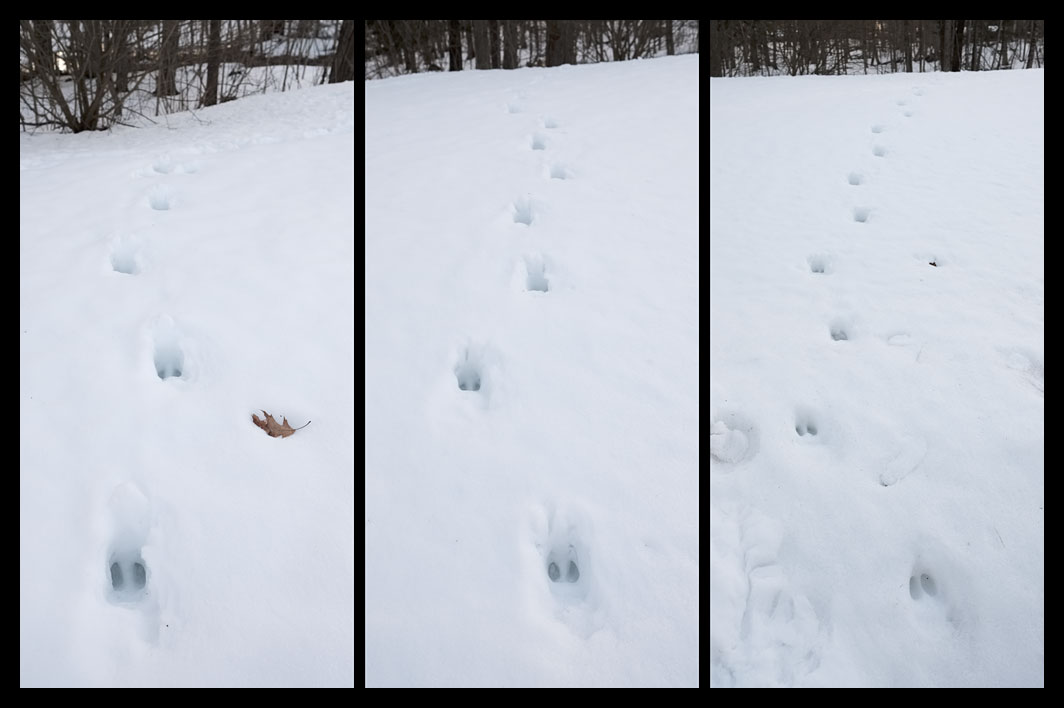 When taking Hikari out at night, we mostly hear the wind in the trees. Most animals keep a distance from the house because of our dog. So it is always a surprise to hear the sound of a large mammal being startled, as happened the other night. The next day, not only we found evidence of the animal, but also of its other two companions. We often see small herds of deer this time of year, but they usually avoid the area around our house. Click on the image for a larger view.
When taking Hikari out at night, we mostly hear the wind in the trees. Most animals keep a distance from the house because of our dog. So it is always a surprise to hear the sound of a large mammal being startled, as happened the other night. The next day, not only we found evidence of the animal, but also of its other two companions. We often see small herds of deer this time of year, but they usually avoid the area around our house. Click on the image for a larger view.
Visitor
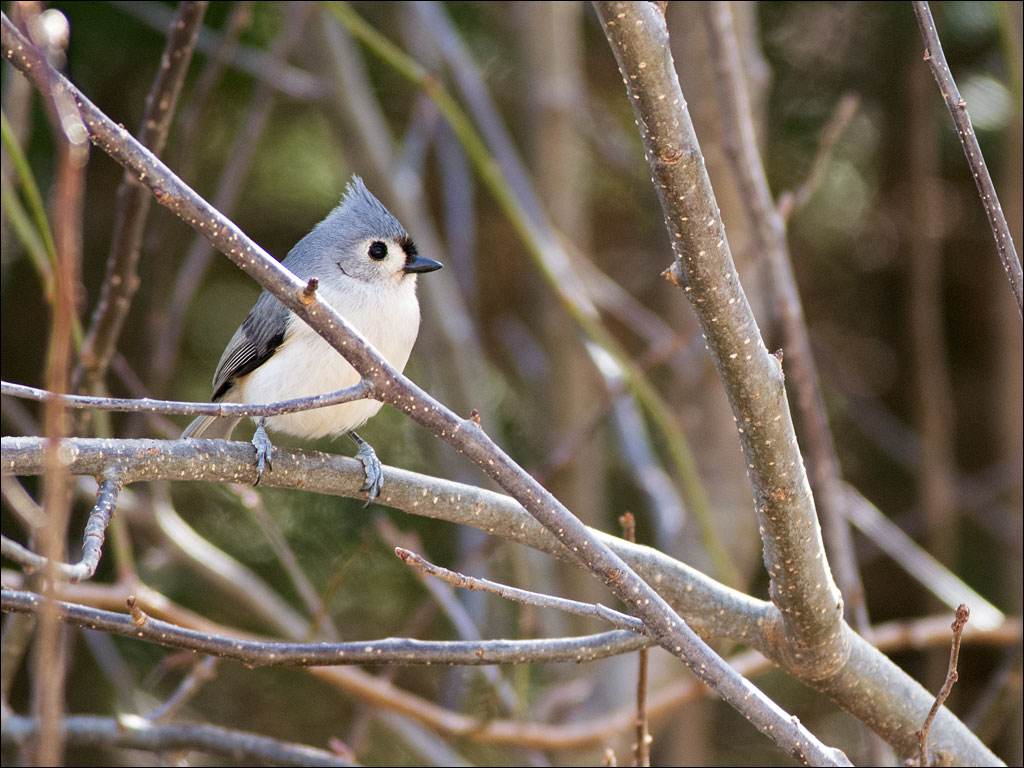 Sunday was unusually warm. Naomi and I spent an hour or so sitting in the sun on our deck watching the visitors to our bird feeders. One of these visitors was a Tufted Titmouse. Not an uncommon bird, but a shy one. After the Chickadees came and settled in, this one joined them. Not confident enough to feed on the feeder, it would return to the adjacent apple tree as soon as it plucked a seed from the netting. Click on the image for a larger view.
Sunday was unusually warm. Naomi and I spent an hour or so sitting in the sun on our deck watching the visitors to our bird feeders. One of these visitors was a Tufted Titmouse. Not an uncommon bird, but a shy one. After the Chickadees came and settled in, this one joined them. Not confident enough to feed on the feeder, it would return to the adjacent apple tree as soon as it plucked a seed from the netting. Click on the image for a larger view.

